Important instruments for Medicine Practical exams
Click on the instruments below to read further.
Simple rubber catheter
It is made up of India rubber or latex rubber.
One end if open and the other end is blunted with a perforation.
Sterilization: Keep in boiling water for 30 mins OR by gamma ray irradiation.
Uses:
1.To relieve urine retention
2.As a feeding tube in infants
3.As a tourniquet
4.For bladder wash using silver nitrate solution
Indications for catheterisation:
Bed bound patients
Unconscious patients
Comatose patients
Renal failure patients
In poisoning
Complications of catheterisation:
1.Urinary tract infection
2.Urethral ulceration
3.Hematuria
Ryle’s tube
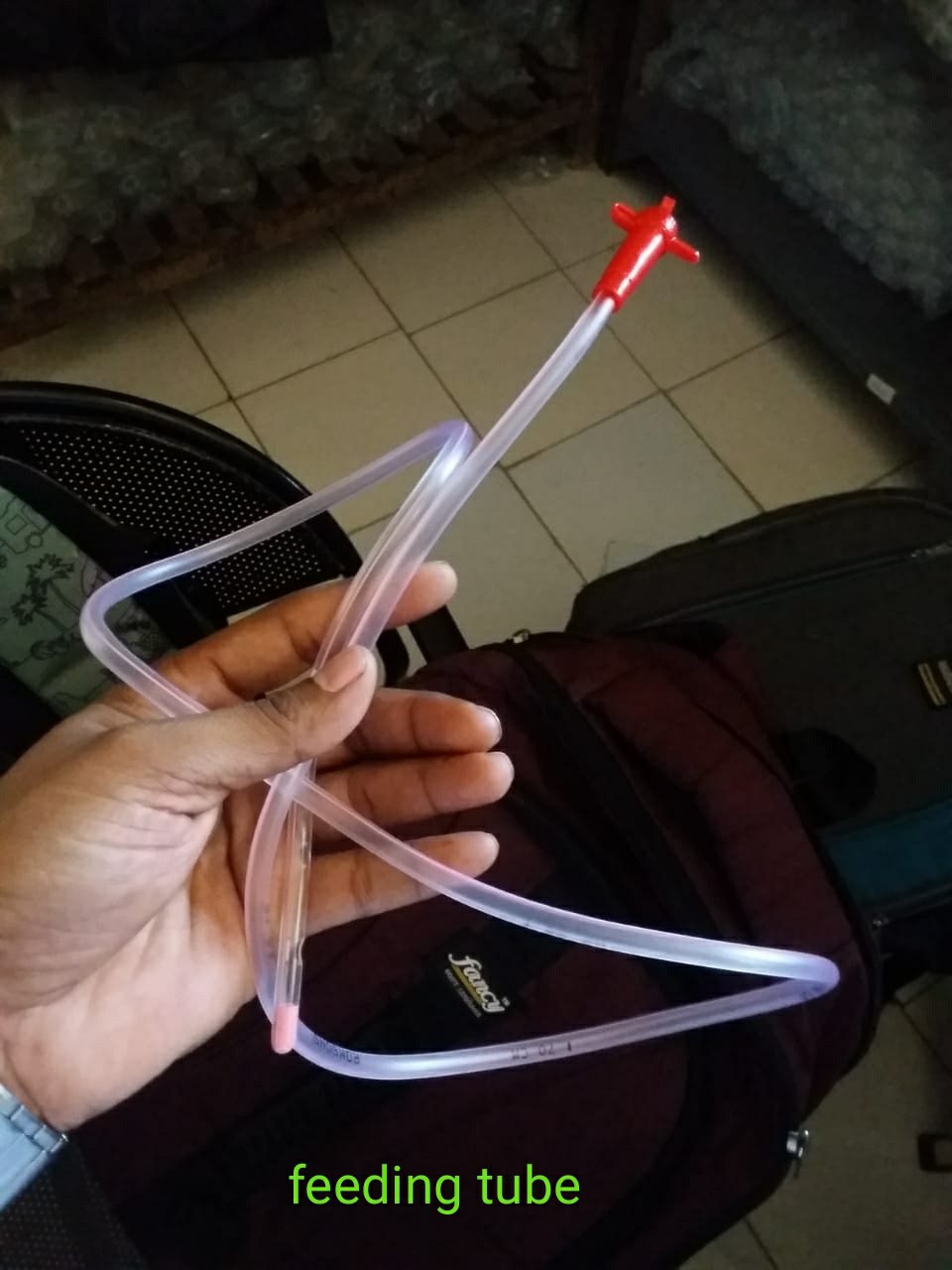
Designed by John Alfred Ryle.
It is made of rubber or polythene.
In rubber tube, the blind bulbous tip has lead shot, while the polythene tube has 3 radiopaque metal balls. They help to facilitate passage of the tube.
Lower end of the tube has side holes to allow easy suction of gastroduodenal contents.
There are 4 circular markings on the body of the tube to indicate the following distances from the upper central incisor teeth:
40 cm- cardiac orifice of the stomach
50 cm- body of the stomach
57 cm- pylorus
65cm- duodenum
Method of sterilization: Keep in boiling water for 30 mins OR by gamma ray irradiation.
Uses
Diagnostic use:
1.To confirm upper GI hemorrhage
2.To diagnose malignant cells in gastric carcinoma
3.To detect the cause of death in suspected poisoning (by gastric aspiration analysis), example OP poisoning
Therapeutic use:
1.Nasogastric feeding
2.Nasogastric suction
3.Gastric lavage in non corrosive poisoning
4.As a tourniquet
Contraindications:
It should not be used in corrosive poisoning and kerosene poisoning.
Complications:
1.Rhinitis, Pharyngitis
2.Esophageal unceration, esophageal perforation
3.Blockage of tube
Foley’s catheter
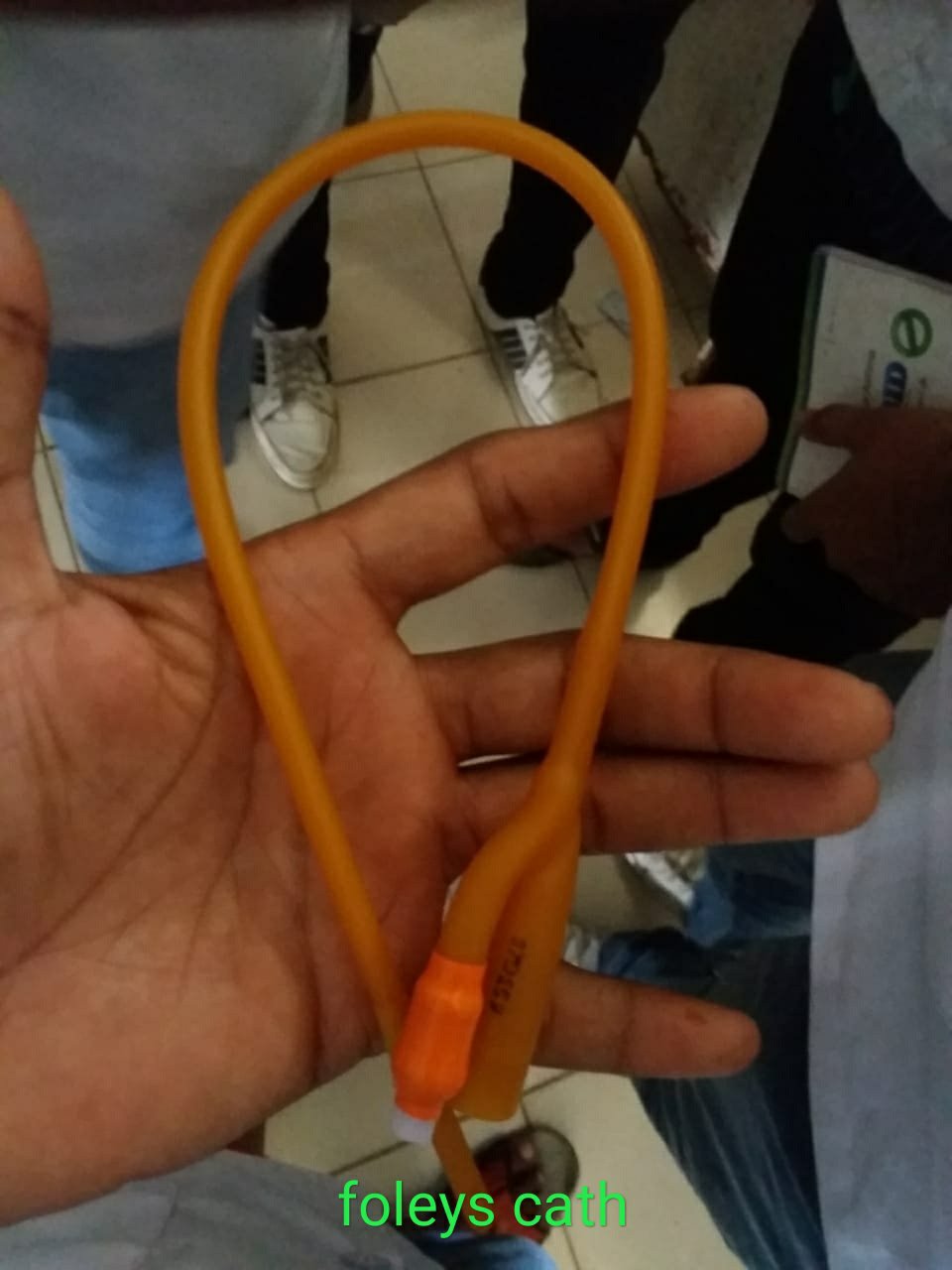
Designed by Frederick Foley.
Produced using silicone or coated natural latex.
It has 2 lumens:
-One lumen drains urine.
-Other lumen connects to the balloon inside and has a valve.
Balloon is filled with sterile water to prevent slipping out, hence it is self retaining.
Uses:
1.To relieve retention of urine in :
Unconscious patients
Comatose patients
Anaesthetised or sedated patients
Patients with enlarged prostate
2.To monitor urine output.
3.For arrest of hemorrhage in epistaxis.
4.To ripen the cervix for induction of labor.
Side effects:
1.Urinary tract infection
2.Trauma
3.Urethral ulceration
4.Hematuria
Metered Dose Inhaler
Metered dose inhalers are devices that are used to deliver medicines (in the form of aerosol) directly into the lungs.
Used in COPD, Bronchial asthma to deliver drugs like:
–Beta 2-agonist (salbutamol, terbutaline, salmeterol, formoterol)
–Corticosteroids (beclomethasone, budesonide, fluticasone)
–Anticholinergics (Ipratropium bromide)
–Mast cell stabilisers (sodium chromoglycate)
Advantages:
1.Rapid onset of action
2.Small dose of drug is needed
3.Side effects are minimum
Disadvantages:
1.Pharyngeal candidiosis because of corticosteroid use
2.Skills and training are required to coordinate it’s use
Spacehaler/Spacer
Parts of spacehaler and explain the use of spacehaler.
Parts include 2 plastic cylinders which are to be fitted into one another to make a space.
One end has a mouth piece through which patient inhales the medicine.
Other end is the inlet to which the Metered dose inhaler is attached after shaking it (MDI) well.
Advantages of spacehaler:
1.It reduces the velocity of particles so that less drug is deposited in the mouth. Hence, more effective than MDI.
2.Less chances of candidiosis with corticosteroids.
3.Can be used in children and elderly.
4.No electricity needed, as compared to a nebulizer.
Disadvantages:
It is a big device to carry in person.
Tracheostomy tube
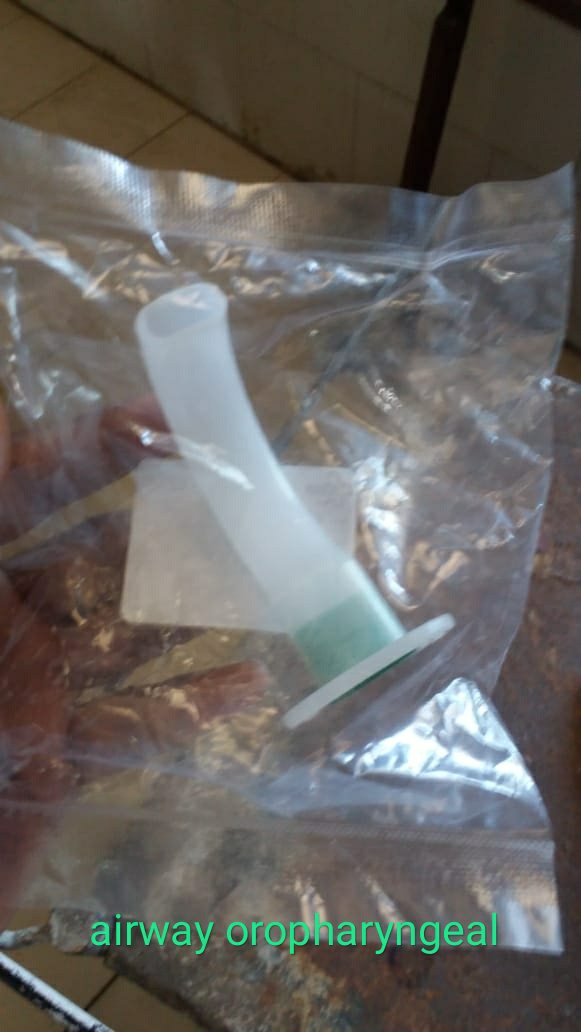
Tracheostomy is an operation for temporary relief of a patient who is suffering from acute upper airway obstruction.
An opening is made into the trachea so that the upper airway obstruction is bypassed. And the tube is inserted into the trachea.
It can be a metallic or rubber tube.
Types of metallic tracheostomy tube include–
1.Fullers bivalved
2.Durham lobster tail tube
Indications for emergency tracheostomy:
1.Laryngeal diphtheria
2.Tetany (laryngeal stridulus)
3.Tetanus (laryngeal spasm)
4.Foreign body in larynx
Indications for elective tracheostomy:
1.In laryngeal carcinoma
2.For long term ventilation
Precautions:
1.Keep the metallic tube for a short duration and replace it with rubber tube
2.Intermittent suction to keep the tube patent
3.Clean the inner tube
4.Give broad spectrum antibiotics
Complications:
1.Tracheal necrosis, tracheal stenosis
2.Collapse of tracheal rings
3.Blockage of tube
AMBU bag

Full form: Ambulatory Manual Breathing Unit
It is a self inflating bag.
AMBU bag or Bag valve mask is a hand held device used to provide positive pressure ventilation to a patient who is not breathing.
Mechanism:
Air enters into the patient’s lungs after squeezing the bag through a tracheostomy or endotracheal tube. When the pressure is released, the bag inflates automatically (the elastic recoil of the chest results air to leave the lungs). This apparatus serves the purpose of mouth to mouth respiration.
Uses:
1.Respiratory failure
2.Respiratory depression
3.Respiratory arrest
4.Instead of mouth to mouth respiration
Complications:
1.Pneumothorax
2.Air embolism
3.Stomach inflation
4.Lung injury
Laryngoscope
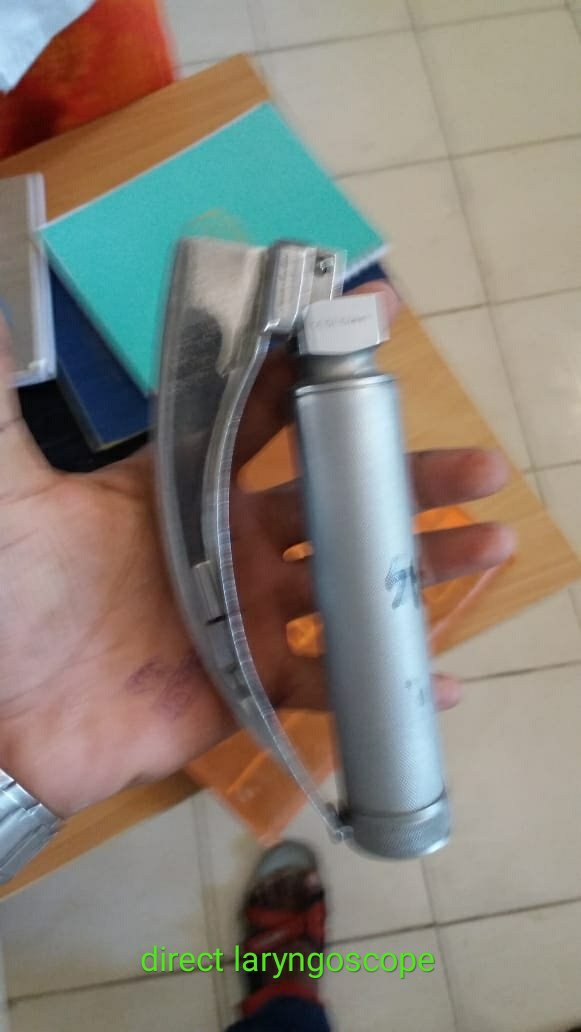
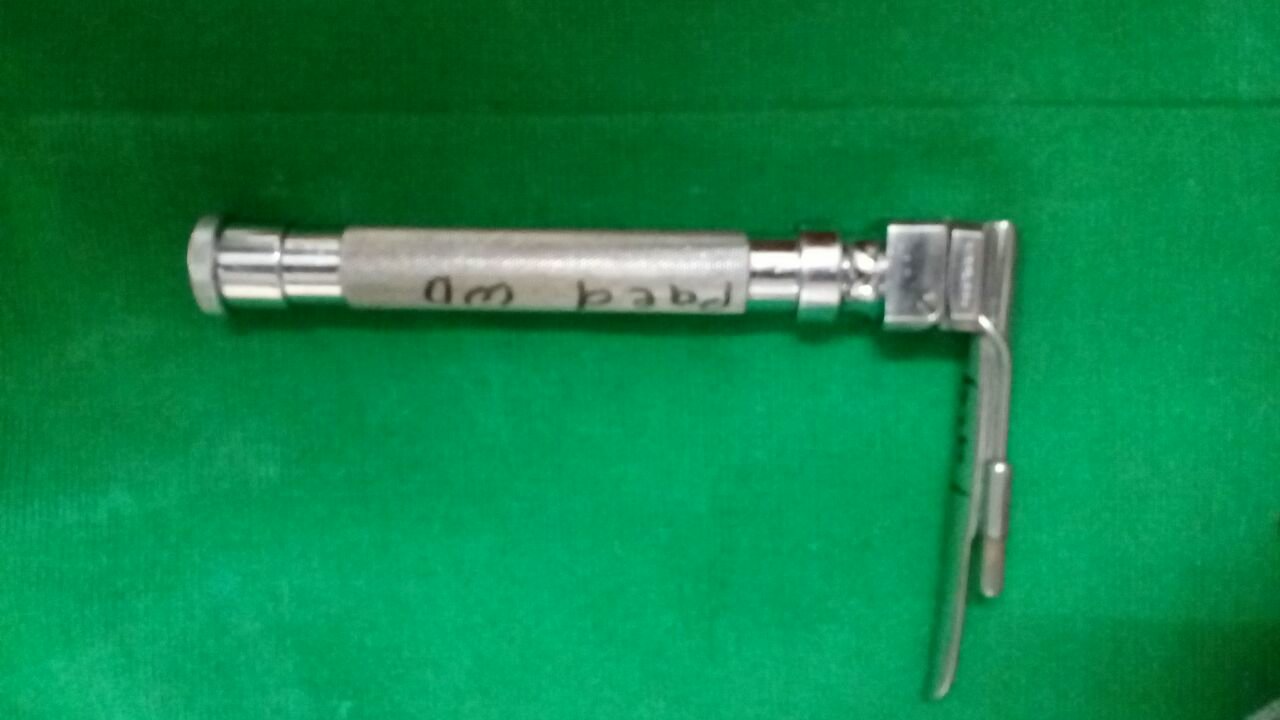
Laryngoscopy is the direct visualization of larynx and hypopharynx.
Position: Neck is flexed on thorax and the head extended on atlanto-occipital joint (barking-dog position).
-Handle of the laryngoscope is held in the left hand.
-Right hand is used to retract the lips, to guide the laryngoscope and to handle suction.
The following structures are visualized:
Base of the tongue
Valleculae
Epiglottis
Pyriform sinus
Arytenoids
Aryepiglottic folds
Vocal cords
False cords
Subglottic area
Indications
Diagnostic:
1.When symptoms point towards larynx and indirect laryngoscopy is not possible (in children and infants).
2.When indirect laryngoscopy is not successful due to excessive gag reflex.
3.To take a biopsy.
4.To examine hidden areas.
Therapeutic:
1.Removal of foreign body from larynx.
2.Removal of benign lesions from larynx (papilloma, polyp).
Contraindications:
1.Diseases of cervical spine
2.Recent coronary occlusion
Complications
1.Injury to lips, tongue, teeth. Teeth may get dislodged.
2.Bleeding
3.Laryngeal edema
Endotracheal tube
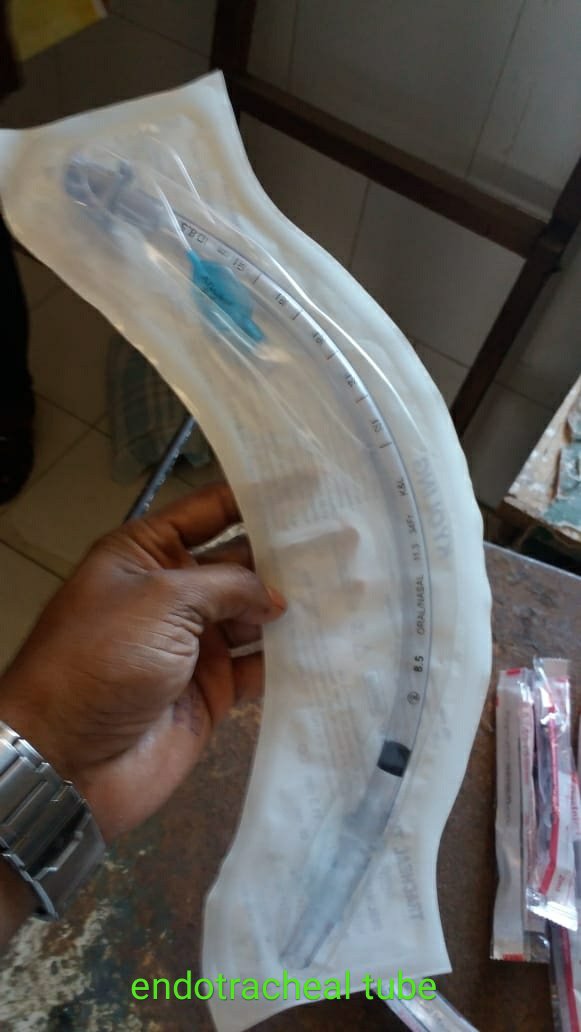
Made of polyethylene or rubber.
It maybe cuffed (the cuff is filled with air to keep the tube in position) or uncuffed.
Endotracheal intubation is an emergency procedure when an endotracheal tube passes from the oral cavity into the trachea for providing adequate ventilation in patients with respiratory failure.
Indications:
1.Respiratory failure (in COPD, respiratory muscle paralysis)
2.Respiratory depression (morphine poisoning)
3.Cardio-respiratory arrest
4.Angioedema of larynx in anaphylaxis
Contraindications:
Laryngospasm
Bone marrow aspiration needle or Sternal puncture needle Carcinoma of upper respiratory tract
Complications:
1.Trauma to upper respiratory tract
2.Tracheal ulceration, stenosis
3.Dislodgement of teeth
Liver biopsy needle (Vim Silverman needle)
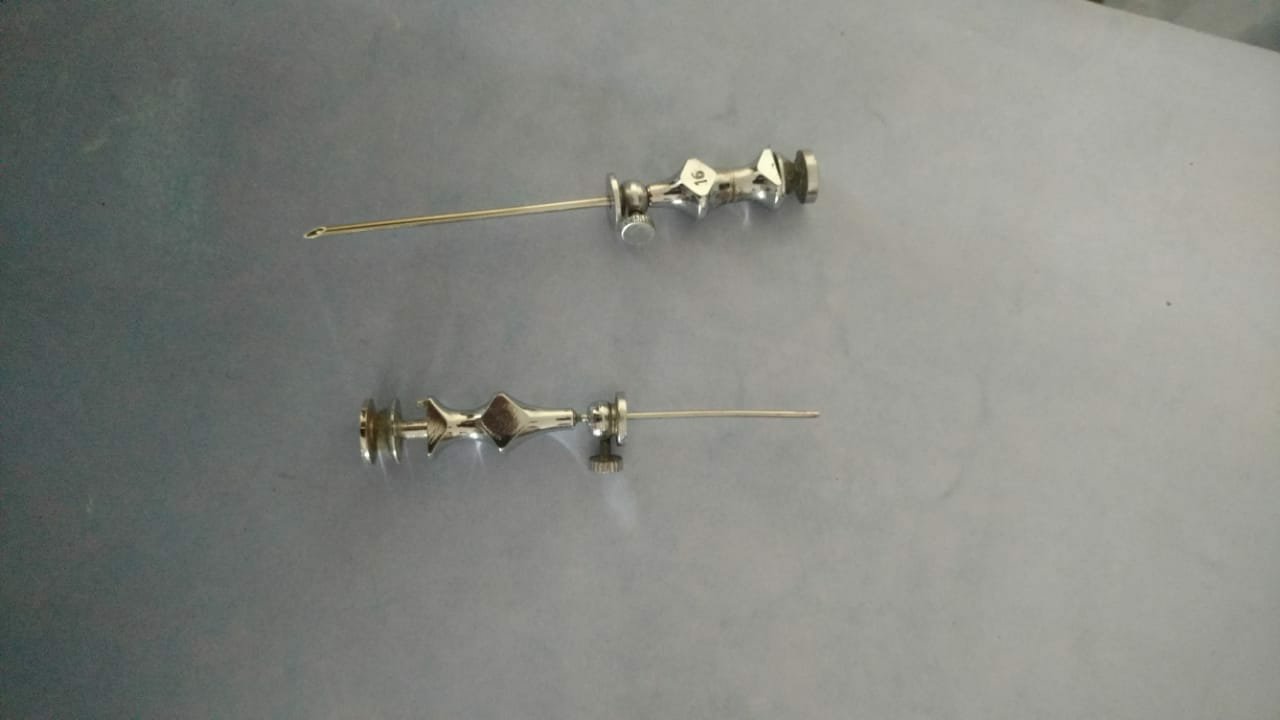
Indications:
1.Chronic hepatitis
2.Drug induced hepatitis
3.Cirrhosis
4.Portal Hypertension
5.Liver carcinoma
6.Storage and metabolic disorders (glycogen storage disorders, hemochromatosis)
Contraindications:
1.Bleeding disorders
2.Known hepatocellular malignancy
3.Tense Ascites
Complications:
1.Hemorrhage
2.Infection
3.Perihepatitis
4.Hepatic coma
Lumbar puncture needle
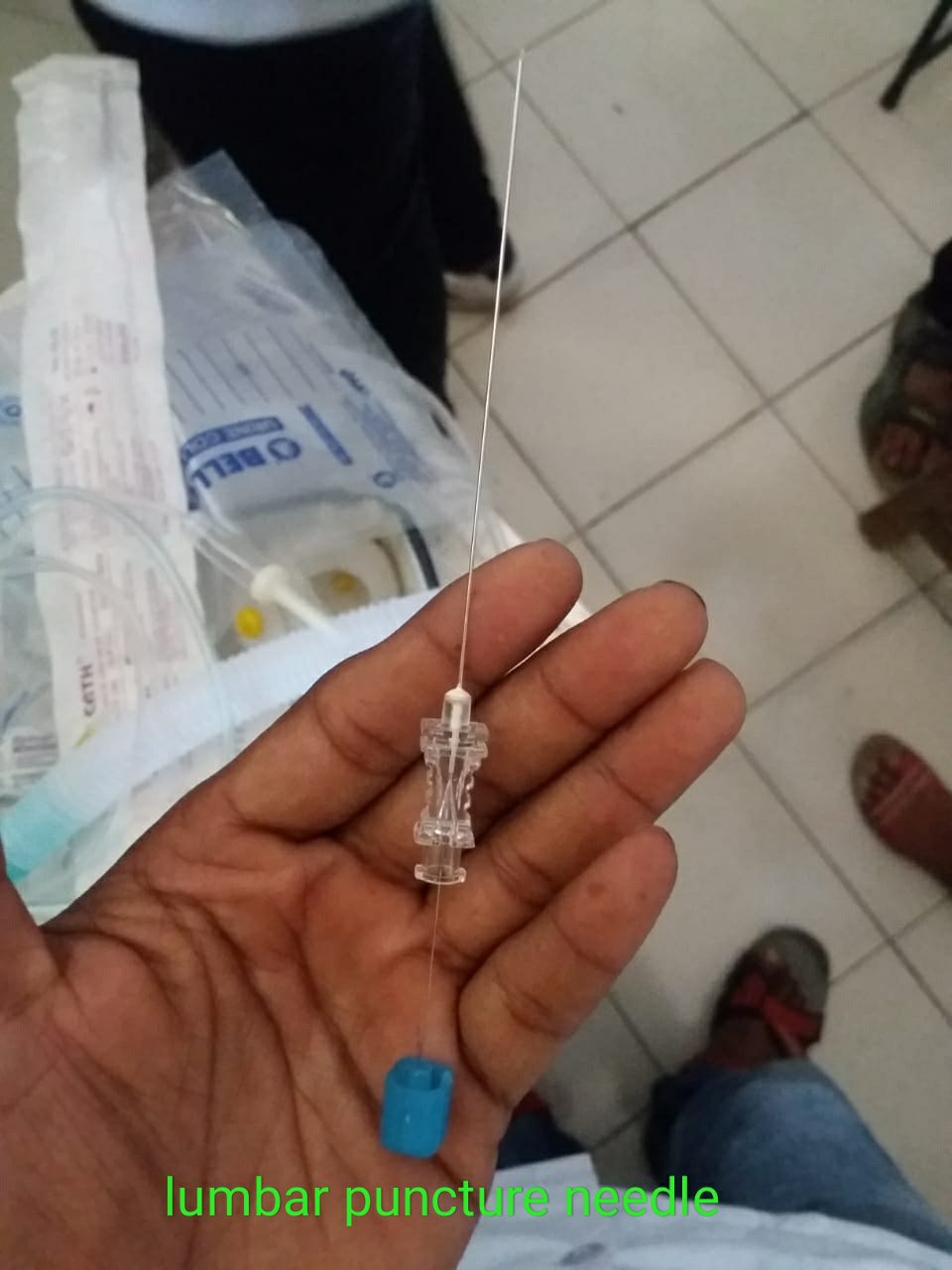
Lumbar puncture is a maneuver by which a temporary artificial communication is made between the CSF pathway and the exterior at the lumbar region.
Diagnostic indications :
Meningitis, meningism
Encephalitis
GBS
Subarachnoid hemorrhage
Therapeutic indications:
Spinal anesthesia
Relieve intracranical tension in hydrocephalus
Other indications:
Paracentesis thoracis
Paracentesis abdominis
Contraindications:
1.Bleeding disorders
2.Papilloedema
3.Meningocele
4.Uncooperative patient
Complications:
1.Infection
2.Post lumbar puncture headache
3.Trauma to nerves, vessels, intervertebral disc
4.Low backache
5.Cerebellar pressure coning syndrome
What are the causes of a dry tap?
1.Faulty technique
2.Very thick pus
3.Adhesive arachnoiditis
4.Spinal subarachnoid block (Froin’s syndrome)
Normal CSF pressure
In lying down position: 60-150 mm of CSF
In standing position: 150- 250 mm of CSF
Amount of CSF to be withdrawn for
Diagnostic purpose: 5-10 ml
Therapeutic purpose: 10-20 ml
Bone marrow aspiration needle or Sternal puncture needle
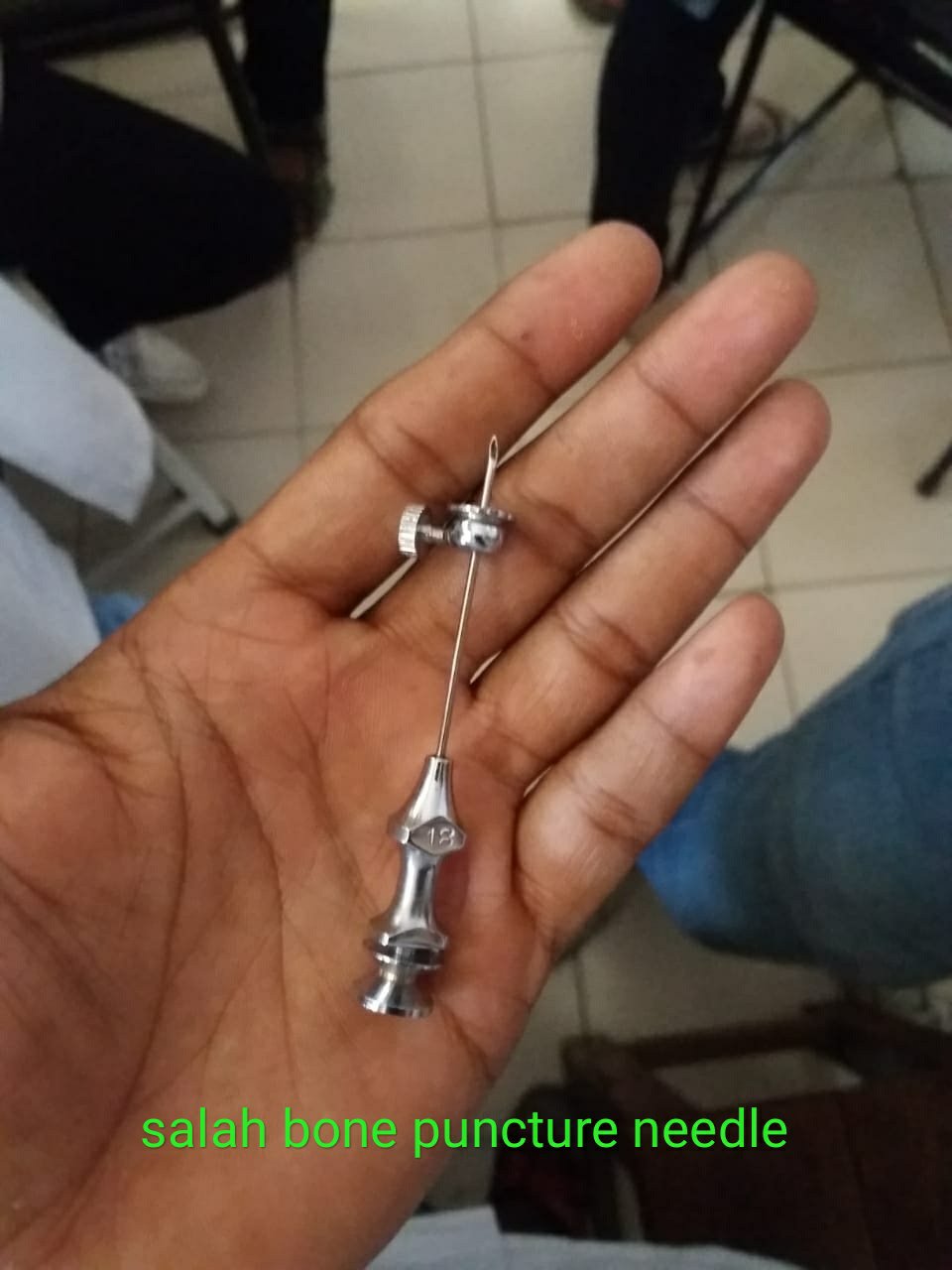
Two types include:
1.Aspiration biopsy (Salah’s needle and Klima’s needle)
2.Trephine biopsy (Jamshidi’s needle)
Parts are:
Needle proper
Adjustable guard
Stylet
Indications:
Aplastic anemia
Leukemia
Malaria
Kala Azar
Bone tumors
Unexplained anemia, thrombocytopenia, granulocytopenia
Complications:
Over penetration
Infection
Bone pain
Hematoma
Shock
Sites of puncture:
Body of sternum
Tibia (medial surface, upper part)
Posterior iliac crest
Spinous process of lumbar vertebra
Ribs
How to be sure that the marrow cavity is reached?
1.Sudden loss of resistance
2.Needle remains in vertical position without any support
3.Suction by syringe produces severe pain (this is the most reliable method to make sure)
Syringe
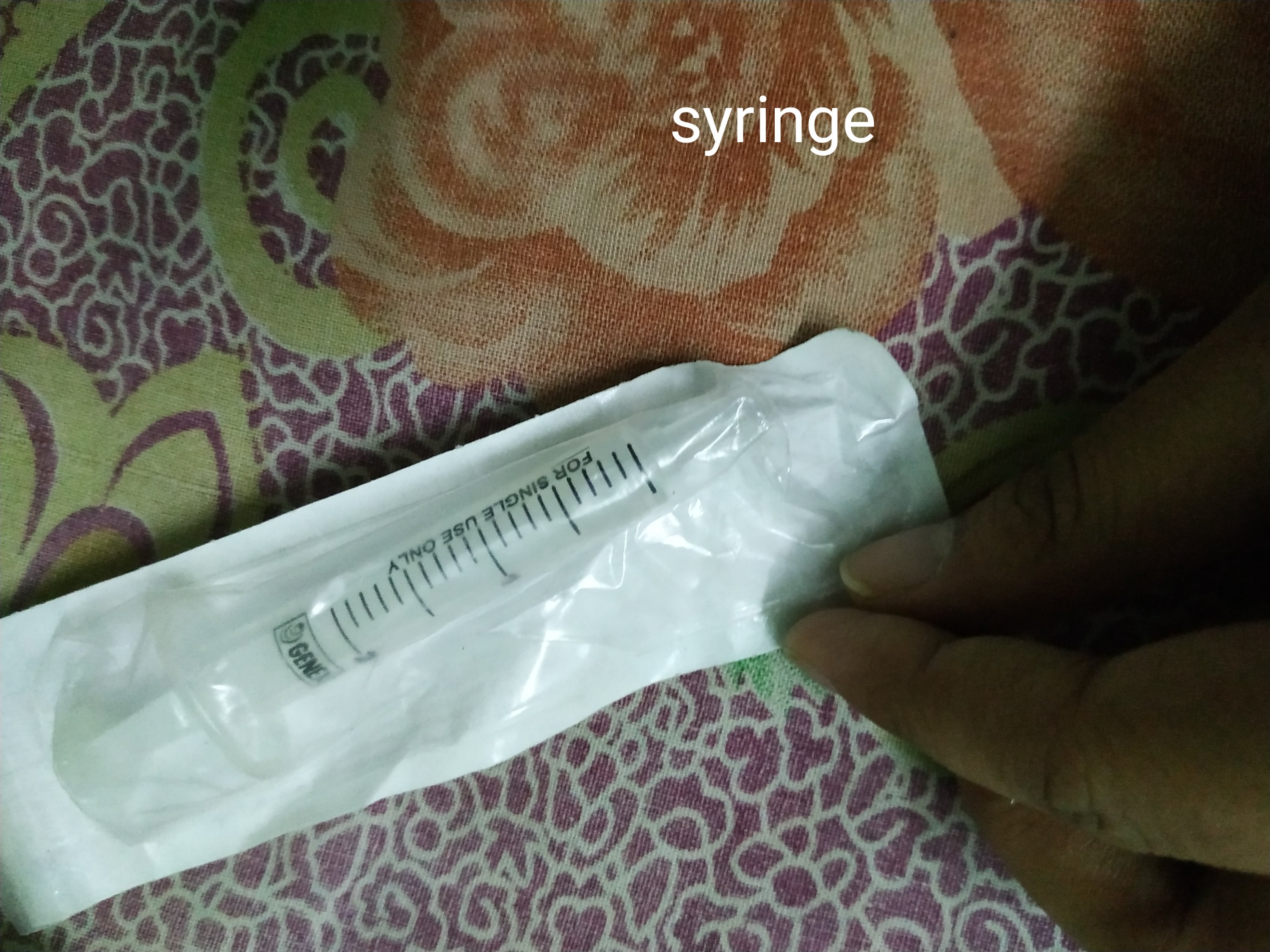
Parts:
1.Cylinder with a nozzle at one end
2.Air tight Piston
Syringe can be made of plastic (hypodermic,disposable) or glass.
Sterilization:
1.Keep in boiling water for 30 mins
2.Gamma ray irradiation
3.Autoclaving
4.Ethelene oxide
Uses of 5ml syringe:
1.Collection of venous blood samples
2.Aspiration from cyst
3.Parenteral administration of drugs (i.m. Tetanus toxoid, s.c.adrenaline)
Uses of 50 ml syringe:
1.Aspiration of pleural fluid, pericardial fluid.
2.Paracentesis abdominis.
3.Aspiration of Amoebic liver abscess.
Disadvantages:
1.It may be painful
2.Abscess formation may occur
3.There may be prolonged bleeding
4.Anaphylaxis may occur
Tuberculin syringe
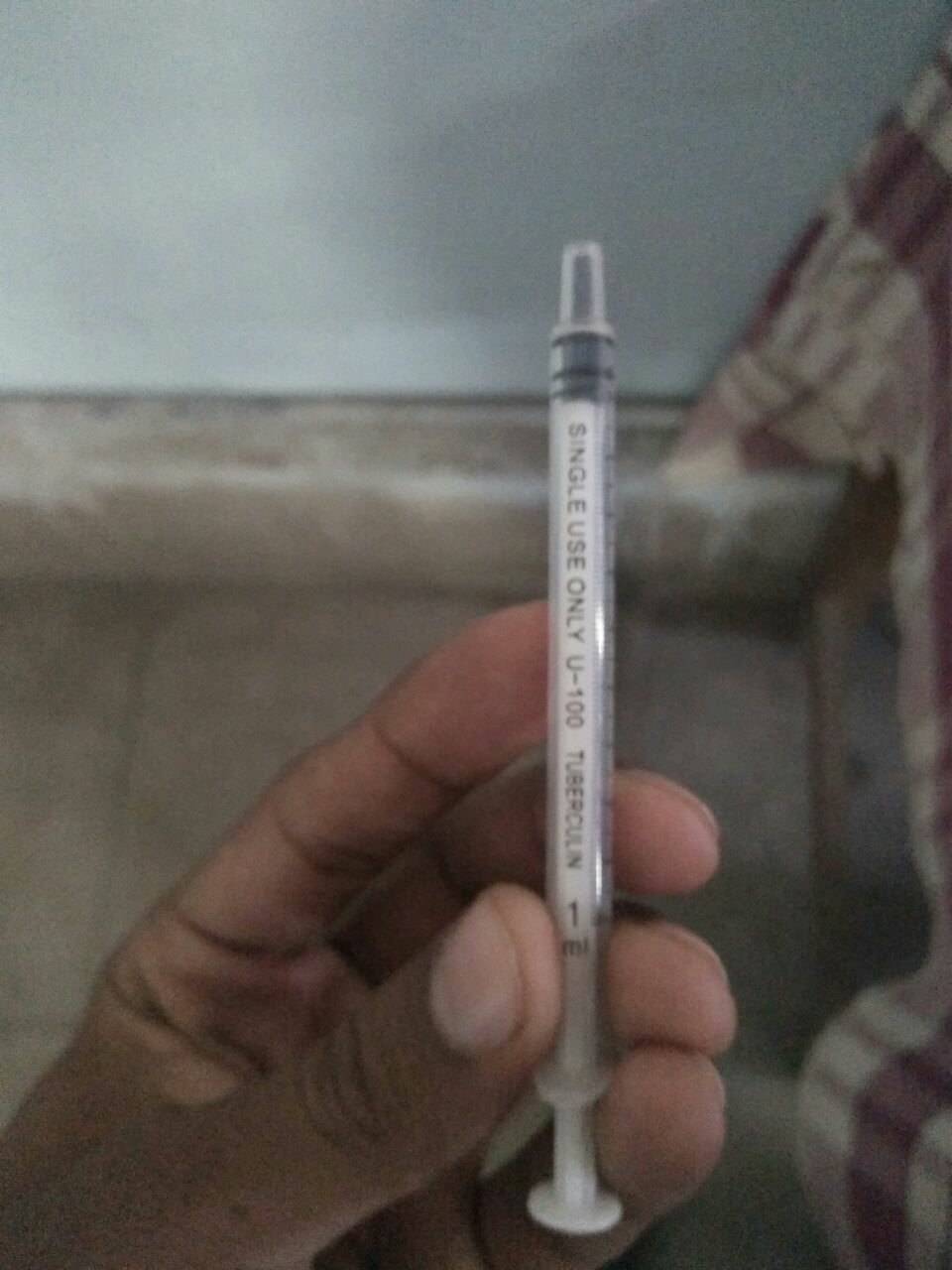
Total volume of Tuberculin syringe is 1ml.
Minimum measurement is 0.01 ml.
The piston is blue in colour.
It is used to administer drugs intradermally.
Uses
1.Administer BCG vaccine.
2.Administer PPD (Purified protein derivative) for Mantoux test.
3.Intradermal sensitivity testing before penicillin and antiserum.
Insulin syringe

Capacity: 1ml
It is available as 40 units /ml or 80 units/ml.
Piston is white in colour.
It is used to administer drugs subcutaneously.
Uses of insulin syringe:
1.Inject insulin in diabetic patients.
2.To give a test dose on the forearm before administering a drug (example: penicillin).
3.Used as a hypodermic syringe in neonates.
Sites for administering insulin :
Abdomen
Arm
Thigh
Buttock
Back
(The site is properly cleaned with spirit)
IV Fluid bottle and infusion set
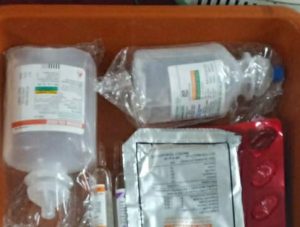

Parts :
1.Bottle made of glass or plastic (540 ml)
2.Infusion set contains
a) Drip tube– A long tube with a needle at each end. One needle enters into the IV bottle and the other enters into the patient’s vein. In the middle of the drip tube, a Murphy’s chamber is present. Also, an adjustable valve controls the rate of flow of the fluid.
b) Airway tube– a small plastic tube for air entry into the bottle.
What is Murphy’s chamber?
-It is present in the middle of the drip tube.
-It regulates the flow of fluid.
-It has an inlet (through which fluid enters into the chamber) and an outlet (through which fluid leaves the chamber).
-It may contain a strainer to filter clots (eg.in blood transfusion set).
Content of the bottle and their uses:
1.Normal saline
Dehydration, diarrhoea, vomiting
2.Dextrose solution or Glucose solution
Used in Hypoglycemic coma and cerebral edema(50% solution)
3.Ringer’s lactate
Fluid of choice in cholera, also used in burns
4.Hypertonic saline (3% or 5%)
Used in Hyponatremia and SIADH (syndrome of inappropriate ADH secretion)
5.Mannitol (20% solution)
To reduce intracranial tension and intraocular tension.
6.Low molecular weight (40,000) dextran
Used in shock and as a plasma expander.
Advantages:
Rapid correction of fluid deficit.
Disadvantages:
Thrombophlebitis
Local cellulitis (swelling and edema)
Hematoma
Air embolism
Sphygmomanometer
Uses of Sphygmomanometer:
1.Measure Blood pressure
2.Hess’ capillary fragility test / Tourniquet test (in Dengue and thrombocytopenia)
3.Trousseau’s sign (latent tetany)
4.To confirm:
a) Pulsus paradoxus
b) Pulsus alternans
c) Water-hammer pulse
5.To demonstrate postural hypotension.
6.To demonstrate Hill’s sign in Aortic regurgitation.
Normal length of cuff should not be less than 10 inches.
Normal width should be 5 inches (in adults)
If a large sized cuff is used, then it will give a false low BP reading.
If a smaller sizes cuff is used, then it give a falsely elevated BP reading.
Sthethoscope
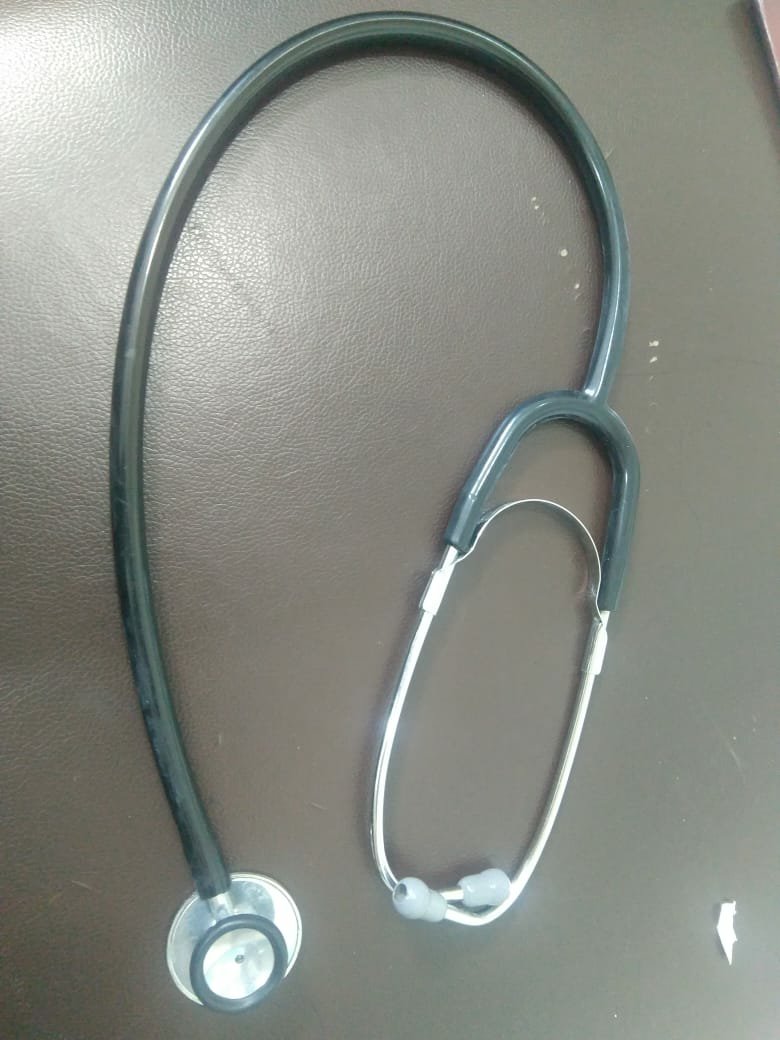
Invented by R.T.H. Laennec.
Has 4 parts:
1.Chest piece
Has a diaphragm (4cm in diameter). High frequency sounds are best heard through the diaphragm.
The bell (2.5 cm in diameter). Low frequency sounds are best heard through it.
2.Ear piece
3.Head piece
4.Connecting tube
Uses:
1.CVS: Heart sounds, murmur, opening snap, ejection click, pericardial rub
2.RS: Breath sounds, pleural rub, vocal resonance
3.GIT: Peristaltic sounds, bruit over the liver or renal artery, venous hum
4.CNS: bruit heard over cerebral arteriovenous malformation
5.Neck: carotid bruit, thyroid bruit, conducted murmur of Aortic stenosis
